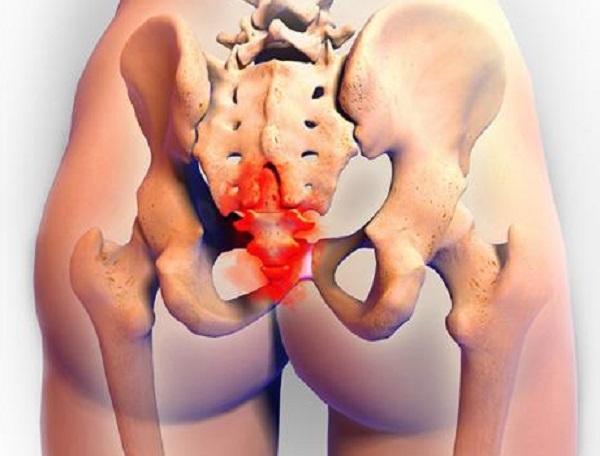“It’s all in your head.” “Just relax.” “Have a glass of wine before sex.” These are direct quotes, from uneducated and insensitive gynecologists to my patients when they try to open up about the difficulty they are having with sex. Patients leave these visits feeling like they are crazy or defective. Some patients have gone decades in sexless marriages, not knowing that they had a diagnosis for which treatment was available.
Vaginismus is a severe, reflexive tightening of the muscles at the vaginal opening (pelvic floor muscles) that prevents penetration. Someone with vaginismus often cannot tolerate the use of a tampon, internal gynecologic exam, or penetrative sex. In my experience, this physical tightening is often coupled with a feeling of upset, avoidance, or what I call the “ick” factor. This is more than just tight pelvic floor muscles- this is a protective spasm that completely prevents penetration. Attempts at penetration are upsetting and painful, and both the patient and their sexual partner are at a loss as to what to do. Physicians performing pelvic exams are often insensitive to the condition, believing that the patients are being overly dramatic, uptight, or difficult. Emotionally this only makes matters worse, at a time when patients are especially vulnerable.
There is value to having a name for something because it makes it possible to have clear conversations about it. “Primary” vaginismus means that the person has never been able to have penetrative sex, and has probably never been able to use a tampon or have an internal gynecologic exam. “Secondary” vaginismus indicates that the person has had normal sexual function in the past, but developed vaginismus as a result of some change in their lives. Vaginismus may be related to a history of trauma, or the patient may have no memory of a traumatizing event. It might be related to a sexually or emotionally repressed background, or not at all. A history of pain, surgery, cancer treatment, or hormonal changes may precede secondary vaginismus.
Pelvic Floor Dysfunction and Vaginismus
To understand the diagnosis it is helpful to have a little background on the muscles in that area. The “pelvic floor” is a group of muscles located in the area of the genitalia- it works to control urination and defecation, to support the organs against gravity, to help with core stability and postural support, and to participate in sexual function. It often works completely reflexively, whether it be to hold in urine when we cough or laugh, to relax to have a bowel movement or to rhythmically contract and relax during orgasm. Just like any other muscle in the body, when it perceives pain or danger it can also go into spasm. With vaginismus, this protective spasm closes off the vaginal opening.
The spasm is completely outside of the person’s control and can be upsetting, painful, and frustrating. It can be inconvenient, in the case of being unable to use a tampon, and can interfere with someone’s ability to receive medical care, in the case of a gynecologic exam. It can prevent women from consummating a marriage or getting pregnant naturally, interfere in intimate relationships, and can cause significant emotional distress.
It takes a great deal of courage to reach out for treatment for vaginismus, and any patient seeking care deserves to be treated with respect and with sensitivity, and after fully informed consent.
In my practice, we treat vaginismus from a multidisciplinary perspective and our patients have great success. Treatment may be a slow process, depending on the individual patient’s situation, but with consistency, it is possible to achieve normal sexual function. We suggest a multimodal approach, which includes one or more of the following: physical therapy, medical review, and potentially medication, counseling (which might include cognitive behavior therapy or EMDR), and sex therapy. I will discuss the physical therapy side of things and have invited a gynecologist as well as a sex therapist to review their approaches as well.
Physical Therapy for Vaginismus
It is normal for muscles to tighten in response to immediate pain or danger, but with vaginismus, the muscles spasm in the absence of these things. Physical therapy focuses on re-educating the muscles to understand that they don’t need to spasm in response to a non-dangerous situation, such as consensual sex. We accomplish this using dilator training, muscle relaxation techniques (both at the pelvic floor and also in the core, spine, and hips), and lots of education. Let’s talk about each one to understand how PT can help heal vaginismus:
Dilator training is not at all what it sounds like! Rather than trying to “stretch”, it involves progressive desensitization of the vaginal opening. It is simple to do and can be done at home on your own. You would start with a small dilator and simply rest it at the vaginal opening. Over time the area becomes less sensitive to touch and the muscles will relax. You might then insert the dilator just one or two millimeters, until you feel tightness building again. At this point you would stop and wait again, allowing the nerves and the muscles there to become acclimated to the sensation. Throughout the process, you can be doing relaxation techniques given to you by your PT or your counselor. It is very slow, very gentle, and always at your own pace. Consistency is key. Over time you progress through larger dilators until you are able to reach your goals, whether they be tampon use, or sexual penetration.
Muscle relaxation techniques might include breathing exercises, hip and back stretching, biofeedback training, and manual treatment provided by your physical therapist. People with vaginismus often have other muscles that are very tight, such as in the buttocks, abdominals, and inner thighs. By helping to relax these muscles the pelvic floor can also be facilitated to relax.
Lastly, education is incredibly important. Understanding your anatomy and your diagnosis is empowering. You might want your sexual partner to come with you for a session to learn about your diagnosis and even learn to help you with your self-treatments. Communication with your partner is learned and practiced in these sessions. Strategies for progressing to penetrative sex can be discussed, and optimal sexual positioning for your particular needs can be determined. Strategies for engaging with gynecologic exams and physicians can be reviewed. Tips for tampon use or other personal goals can be discussed. Knowledge is power.
While physical therapy can provide self-care training (dilators), muscle relaxation techniques, and education, it works best in conjunction with gynecologic care and psychotherapy.
Gynecological Care
At the very least, every patient needs to be evaluated to determine if there is an underlying condition that needs to be managed, such as infections, skin diseases, or hormonal changes. These underlying conditions must be treated in order for vaginismus to be successfully resolved. Your physician can also offer medical interventions that may speed your recovery.
Dr. Tessa Krantz, a urogynecologist specializing in non-surgical management, explains the variety of medical interventions that are available to patients:
- Oral medications can be used to manage stress and anxiety associated with an inciting event, such as a benzodiazepine (Xanax, Ativan) for short-term relief of anxiety, or Serotonin Reuptake Inhibitors (SSRI) medications to assist with overall anxiety.
- Vaginal suppositories containing a variety of medications may provide a more localized treatment directly to the muscles of the pelvic floor. Vaginal diazepam is frequently used to treat pelvic floor tension myalgia and pelvic pain associated with Vaginismus. Vaginal administration of diazepam results in lower peak serum plasma concentration than oral administration.
- Compounded topical creams may assist with pain management if needed. These creams may include medications for neuropathic pain such as ketamine, gabapentin, clonidine, and lidocaine.
- Trigger point injections are injections of a local anesthetic to the muscles of the pelvic floor that are tightening and causing pain. Dry needling may also be an option for relieving these trigger points. Injections of this type can be done in the office, in an outpatient setting. After a trigger point injection, a patient may go home and actively use her pelvic floor muscles. These are generally safe and provide significant pain relief within 24 to 72 hours of treatment. Risks are low, the most common is temporary numbness around the injection site and bleeding.
- Botox is a neuromodulator that relaxes muscles when it is injected- it may be injected into the muscles of the pelvic floor to prevent them from contracting. This may assist to break the cycle of fear/anxiety, muscle tightening, and pain. Injections of this type are typically done in an operating room setting. Results are not permanent and can last from 4 months to a year and may require more botox injections in the future. Side effects may include pain and discomfort at the injection site, swelling at the injection site, and urinary tract infections. However, these risks are low.
Counseling and Sex Therapy
Dr. Sally Valentine, a licensed clinical social worker, and AASECT certified sex therapist explains that the role of sex therapy in clients with vaginismus is to help reduce the psychological components contributing to pelvic muscle spasms, or impacted by the condition, and to work toward a positive and pleasurable sexual template for the client to move forward with. This includes addressing issues that may have developed or co-existed as a result of vaginismus such as anxiety, depression, hypervigilance around sexuality or sex, avoidance of sex, fear of penetration, sexual fear, obvious sexual pain (inherent in the diagnosis), sexual shame, relationship conflicts, sexual relationship decline, fear of intimacy, unprocessed sexual events, such as sexual assault and/or trauma, or even traumas experienced in the process of finding the correct diagnosis.
She describes how she structures treatment around a few key steps, starting with a thorough history taking and using the PLISSIT model, which many sex therapists use to help organize their work:
- Giving the patient permission to speak about all aspects of her situation and ordeal. This is an opportunity to talk about all her feelings, confusion, pain, hurt, frustration, anger, rage, resignation or hope.
- Providing information. This starts with understanding what the client already knows, and then filling in the gaps, as well as correcting misunderstandings of myths. This can help demystify the condition, improve sexual communication, and provide resources.
- Providing specific suggestions, such as breathing exercises, journaling, stress reduction techniques, and sensate focus exercises.
- Providing intensive therapy as needed. This might include cognitive behavioral therapy to address cognitive distortions, emotional dysregulation, or maladaptive behaviors. It might include EMDR or hypnotherapy, which are modalities that focus on healing from trauma.
Each specialty, physical therapy, gynecologic care, and psychotherapy/sex therapy, has an important role in treating vaginismus. While it can be challenging to find expert care providers, we hope that this overview has given you confidence that you are not alone in your experience, and that there are proven treatment methods available to you. Whatever your goals are, whether it be to participate in penetrative sex, use a tampon, or go to the gynecologist, it is possible to achieve them.
To connect with Dr. Krantz, you can reach out through her website at Women’s Home Health. To connect with Dr. Valentine you can find her information here. Dr. Wakefield can be reached at Well Springs Health.
We Need Your Help
More people than ever are reading Hormones Matter, a testament to the need for independent voices in health and medicine. We are not funded and accept limited advertising. Unlike many health sites, we don’t force you to purchase a subscription. We believe health information should be open to all. If you read Hormones Matter, like it, please help support it. Contribute now.
Yes, I would like to support Hormones Matter.
Photo by Imani Bahati on Unsplash.















It took only two sessions if pelvic floor therapy to damage the nerves in the area. I had always counted myself lucky that throughout the years of spine and nerve problems, these ones were not affected…
Three years later, even though so many of my ‘symptoms’ resolved by adressing nutritional and hormonal deficiencies – these nerves will still flare up. Whenever a neighbor plays loud music, they buzz to the bass. And whenever there are vibrations, such as universal hums from machinery, my whole pelvic floor resonates.
I curse that physiotherapist from time to time.
My understanding is that it can also be due to toxic levels of oxalates in the body that bio accumulate in the vaginal area as well as other parts of the body.